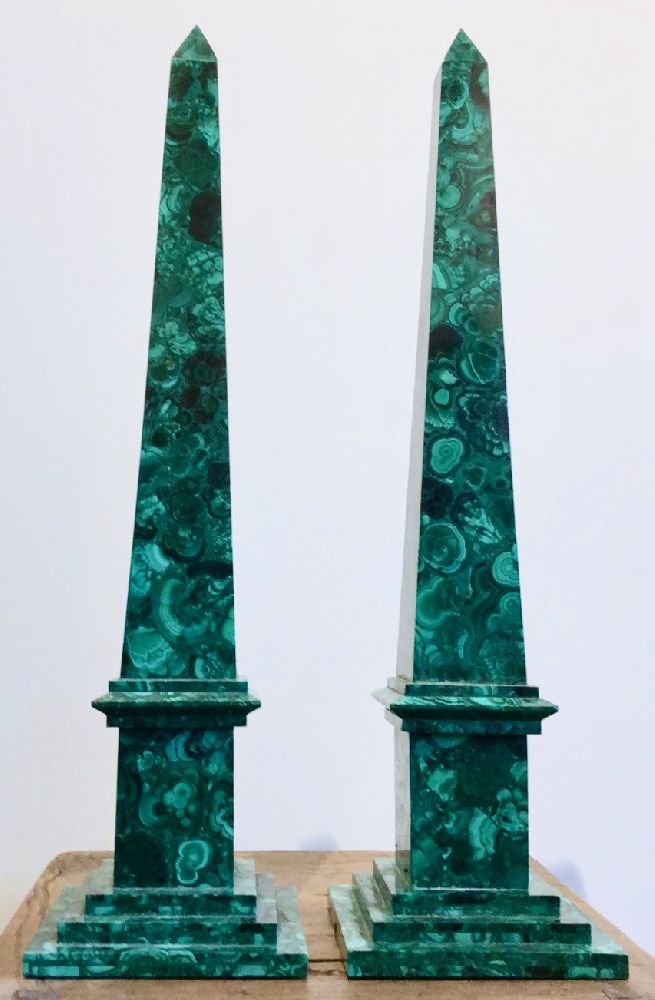

Title: Large Pair of Designer Russian Marble Malachite Obelisks sculptures
Shipping: $29.00
Artist: N/A
Period: Unassigned
History: N/A
Origin: N/A
Condition: Museum Quality
Item Date: N/A
Item ID: 6786
A spectacular Russian neoclassical style obelisks of malachite. Square, tapered shafts on a raised panel stepped base. Large Pair of Russian Malachite Obelisks, 20th century, tapering square shape set atop a stepped plinths. Beautiful pair of Malachite veneered obelisk points. Solid tapered malachite obelisks. Good quality hand-carved malachite and exquisite proportions. Very Good Condition, Vintage / Antique / Used, Original Condition Unaltered, No Imperfections Condition Notes In good condition. The stone's name derives (via Latin: molochītis, Middle French: melochite, and Middle English melochites) from Greek. Malachite has been used as both an ornamental stone and as a gemstone. Malachite was used as a mineral pigment in green paints from antiquity until about 1800. The pigment is moderately lightfast, very sensitive to acids, and varying in color. A 17th-century Spanish superstition held that having a child wear a peace of malachite would help them sleep, and keep evil spirits at bay.
Link: https://en.wikipedia.org/wiki/Obelisk
An obelisk / pointed pillar" is a tall, four-sided, narrow tapering monument which ends in a pyramid-like shape or pyramidion at the top. These were originally called tekhenu by their builders, the Ancient Egyptians. The Greeks who saw them used the Greek term 'obeliskos' to describe them, and this word passed into Latin and ultimately English. Ancient obelisks are monolithic; that is, they consist of a single stone. Most modern obelisks are made of several stones; some, like the Washington Monument, are buildings.
Obelisks played a vital role in their religion and were prominent in the architecture of the ancient Egyptians, who placed them in pairs at the entrance of the temples. The word "obelisk" as used in English today is of Greek rather than Egyptian origin because Herodotus, the Greek traveller, was one of the first classical writers to describe the objects. A number of ancient Egyptian obelisks are known to have survived, plus the "Unfinished Obelisk" found partly hewn from its quarry at Aswan. These obelisks are now dispersed around the world, and fewer than half of them remain in Egypt.